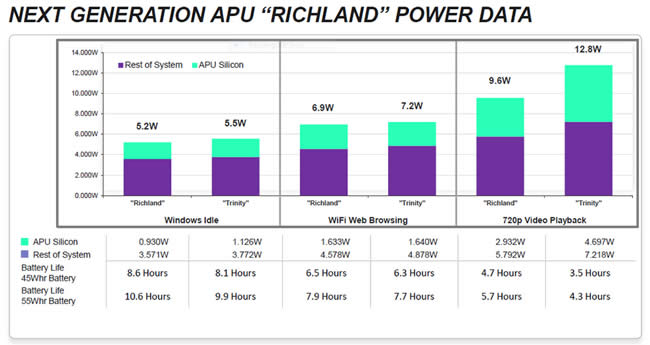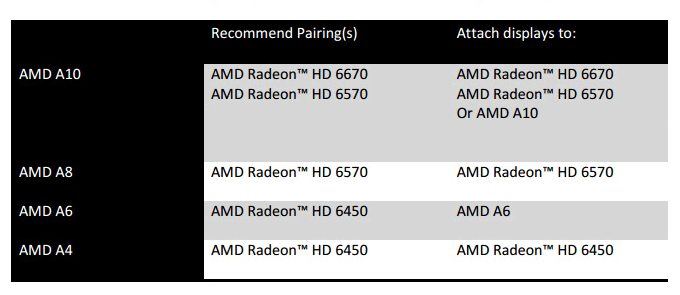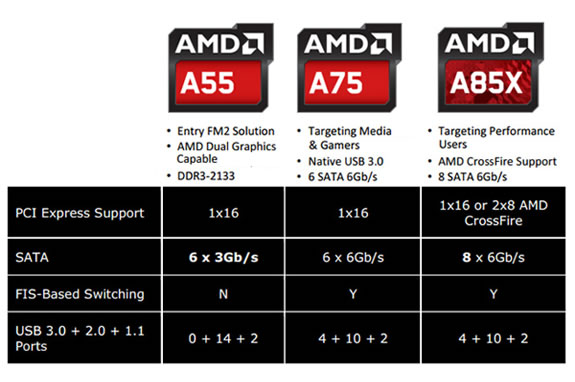Our Aim
To provide you with an overview on New And existing technologies, hopefully helping you understand the changes in the technology. Together with the overviews we hope to bring topical issues to light from a series of independent reviewers saving you the time And hassle of fact finding over the web.
We will over time provide you with quality content which you can browse and subscribe to at your leisure.
TekSpek 's

AMD Richland APUs
Date issued:
Building APU Momentum
While AMD has a proud history of developing benchmark-busting computer processors, there's no ignoring the fact that today's semiconductor giants are in a race to develop chips that are more efficient than ever before.With the modern CPU being asked to power everything from the thin-and-light tablet to the ultra-powerful desktop, the world's chip giants are finding new ways to develop micro-architectures that scale across multiple usage scenarios.
AMD, with strong CPU and GPU credentials to its name, is well placed to deliver all-in-one processors that pack strong multimedia performance one tidy package. The chip giant's solution, dubbed APU (Accelerated Processing Unit), combines up to four CPU processing cores and class-leading integrated graphics within a single, affordable chip aimed at mainstream laptops and desktop PCs.
The APU proposition holds plenty of merit and today AMD is further bolstering its appeal with the launch of a refreshed APU range codenamed Richland.
Introduced as an upgrade to last year's Trinity, the Richland APU uses the same base geometry and architecture, but the interim time has provided AMD with the opportunity of refining the design such that Richland APUs run at higher clocks, use better thermal/power management and offer up to 30 per cent more application performance - all at the same TDP.
In keeping with the recent trend, Richland APUs were first released to the laptop market but the technology is now being made available to desktop users under the established A4, A6, A8 and A10 product lines. What will change, as with any quasi-generational bump, is the model-numbering suffix.
The New Richland APUs
At launch, AMD will have at least half-a-dozen desktop Richland APUs available to consumers. Note that, while there has been little change in underlying architecture, AMD is bumping the APU suffix to 6xxx (from 5xxx) and the integrated graphics to HD 8xxx (up from HD 7xxx). The design familiarity also extends to the graphics portion, which is based on the same Northern Islands architecture found on Trinity, not on the newer Graphics Core Next (GCN).
We'll have to wait for the full A-series APU refresh, codenamed Kaveri, before there are significant silicon alterations afoot. In the meantime, the following table illustrates the key changes on the best APUs from the Richland and Trinity generations.
APU Model |
CPU Cores |
CPU Base Clock |
CPU Turbo Clock |
GPU Brand |
GPU Cores |
GPU Clock |
L2 Cache |
Max. DDR3 |
TDP |
|---|---|---|---|---|---|---|---|---|---|
| AMD 'Richland' APUs (2013, 32nm) | |||||||||
| A10-6800K | 4 |
4.1GHz |
4.4GHz |
HD 8670D |
384 |
844MHz |
4MB |
2,133MHz |
100W |
| A10-6700 | 4 |
3.7GHz |
4.3GHz |
HD 8670D |
384 |
844MHz |
4MB |
1,866MHz |
65W |
| A8-6600K | 4 |
3.8GHz |
4.2GHz |
HD 8570D |
256 |
844MHz |
4MB |
1,866MHz |
100W |
| A8-6500 | 4 |
3.5GHz |
4.1GHz |
HD 8570D |
256 |
800MHz |
4MB |
1,866MHz |
65W |
| A6-6400K | 2 |
3.9GHz |
4.1GHz |
HD 8470D |
192 |
800MHz |
1MB |
1,866MHz |
65W |
| A4-4000 | 2 |
3.0GHz |
3.2GHz |
HD 7480G |
128 |
720MHz |
1MB |
1,333MHz |
65W |
| AMD 'Trinity' APUs (2012, 32nm) | |||||||||
| A10-5800K | 4 |
3.8GHz |
4.2GHz |
HD 7660D |
384 |
800MHz |
4MB |
1,866MHz |
100W |
| A10-5700 | 4 |
3.4GHz |
4.0GHz |
HD 7660D |
384 |
760MHz |
4MB |
1,866MHz |
65W |
| A8-5600K | 4 |
3.6GHz |
3.9GHz |
HD 7560D |
256 |
760MHz |
4MB |
1,866MHz |
100W |
| A8-5500 | 4 |
3.2GHz |
3.7GHz |
HD 7560D |
256 |
760MHz |
4MB |
1,866MHz |
65W |
| A6-5400K | 2 |
3.6GHz |
3.8GHz |
HD 7540D |
192 |
760MHz |
1MB |
1,866MHz |
65W |
| A4-5300 | 2 |
3.4GHz |
3.6GHz |
HD 7480D |
128 |
723MHz |
1MB |
1,600MHz |
65W |
Examining the vital statistics of the best-performing Richland and Trinity desktop APUs - A10-6800K vs. A10-5800K - reveals that the refresh is based around a change in top-end frequency. The A10-6800K's quartet of Piledriver CPU cores can run almost eight per cent faster, while the integrated graphics processor (IGP) is speedier to the tune of six per cent and supported DDR3 memory frequency rises almost 15 per cent, from 1,866MHz to 2,133MHz.
Eking Out Extra Speed
You may wonder about the technical explanation for how AMD has eked out extra frequency. The main reason why Trinity-beating clocks can be run at the same TDP rests with how power is allocated to the chip. With Trinity, the general assumption is that if the CPU or GPU (or both) call for extra power, then there is a good reason for the chip to allocate its power budget to the required resource. For example, run Prime95 and the CPU portion of the APU demands all the power; the power-delivery algorithm happily obliges. However, many under-load cases are not always as simple as that.
For instance, a gaming scenario may automatically encourage the Trinity APU's power algorithm to shunt the majority of power to the GPU, but perhaps when the game engine is CPU-limited to some degree, a chunk of power is better spent on providing the CPU more of the overall budget - something that Trinity APUs are not so good at. Individual cases are more complex than just flicking the power switch on/off to any part of the APU; one need to understand the context in which power is demanded.

The microprocessor in charge of Richland's temperature-controlled power-delivery system takes a wide range of factors into account before deciding how best to farm out the available power, including application environment (as above), ambient environment (general temperature) and cooling used.
Sensibly getting power to where it's needed most has been improved in Richland, and AMD also has a greater number of P-states in the new APUs. P-states define the relationship between power and frequency, and adding more points gives the APU a greater number of choices when selecting the optimum frequency/voltage, making it more efficient than ever before.
Maintaining Continuity
The new generation of 6-series APUs have plenty in common with their 5-series counterparts and AMD has used the familiarity to make it easier for consumers to identify and install upgraded parts. In keeping with Trinity, certain Richland APUs will be available as unlocked K-series chips, meaning the user can increase frequencies/multipliers without impediment.

AMD Dual Graphics
AMD Dual Grpahics can provide additional acceleration to your AMD Radeon™ Graphics cards. We reccomend the following pairings when building an AMD Dual Graphics setup.
Also carried over from the previous generation, select discrete Radeon cards can be paired with the on-chip GPU for Dual Graphics configurations that allow both graphics processors to work in tandem to achieve maximum performance.

Last but not least, the use of a common underlying architecture has allowed AMD to continue to utilise the existing FM2 Socket and accompanying A55, A75 and A85X chipsets. This means that users of existing FM2 motherboards will be able to install a new Richland APU as an in-place upgrade.
Summary
AMD's new generation of Richland APUs offer higher-clocked CPU cores allied to some of the best-performing IGPs in the industry, all while keeping within the same TDP. Increased frequencies, support for faster RAM and enhanced power management all come together to deliver better performance, and the transition between generations is made easier through the continued use of the existing FM2 socket.
Offering a well-balanced blend of CPU and GPU performance, the latest AMD APUs are ideally suited to mainstream multimedia use. As always, Scan Computers has a wide range of Richland APUs available at competitive prices and available for your perusal.